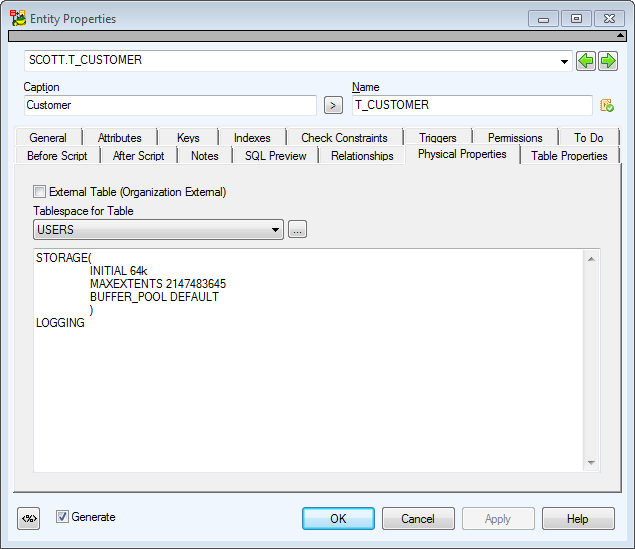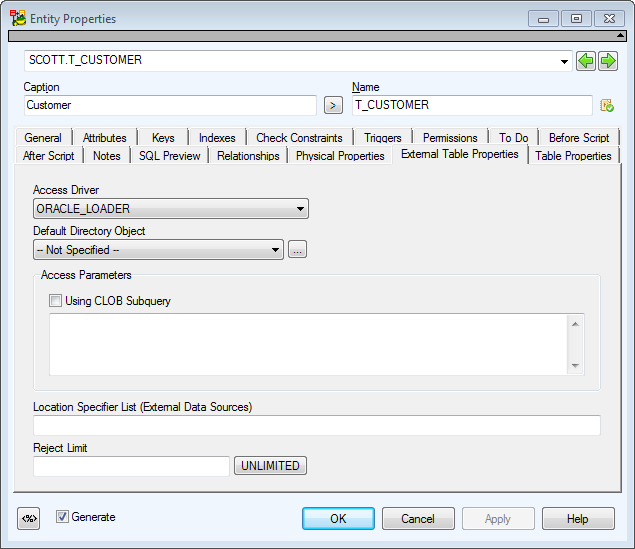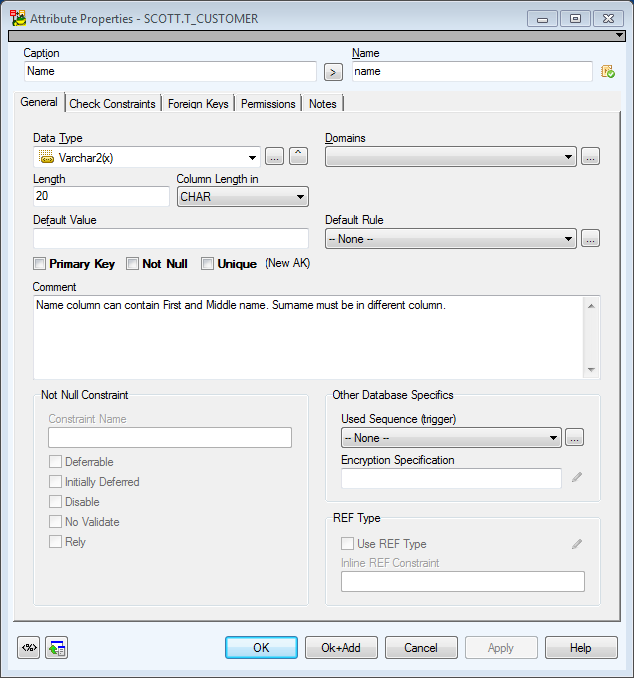Toad Data Modeler supports MySQL 8.0 in Reverse Engineering from a database, from a SQL file, Change Script Generation and SQL/DDL Code Generation
Toad Data Modeler supports MySQL 8.0 in Reverse Engineering from a database, from a SQL file, Change Script Generation and SQL/DDL Code Generation
See Reverse Engineering - MySQL 5.0 for more information.
See Script Generation - MySQL 5.0 for more information.

External tables are supported. On tab Physical Properties, select the External Table (Organization External) checkbox. The External Table Properties tab will occur on the form.


Data Types:
For Char and Varchar2 data types, you can define Column Length in.
For User data type, you can define REF options.
|
|
Note: Change for CHAR/BYTE of attributes: Previously, it was necessary to select CHAR or BYTE for Char(x) and Varchar(x) data types of attribute (domain) in Column Length in combo box. Now there is a new item "Default" that is selected by default.
|
Used Sequence (trigger) - From this box, you can select a sequence that you want to use for the attribute. (A new trigger will be created in SQL script.)
Encryption Specification - Here, you can write e.g. USING 'AES192' NO SALT.
Example of Expression index:
Example: Index properties (for domain index):
When you select Varray Type or Nested Table Type, a new tab displays (Varray Type tab or Nested Table Type tab). There, you can see new boxes where you write appropriate values. Click Create Definition and the definition will be written in the memobox.
The content of the boxes is not saved and is not used for reverse engineering, script or report generation.
Hints in memoboxes for User Data Types are shown.
Support for Oracle Java Source, including reverse engineering: All the three types of Java schema objects (SOURCE, CLASS, RESOURCE) should be written to this object. - During reverse engineering only SOURCE types are loaded, and from them only sequences of characters for Java source. Other Java schema objects (CLASS, RESOURCE) are loaded only as a name. Checkbox Generate is unselected for all the Java schema objects (SOURCE, CLASS, RESOURCE).